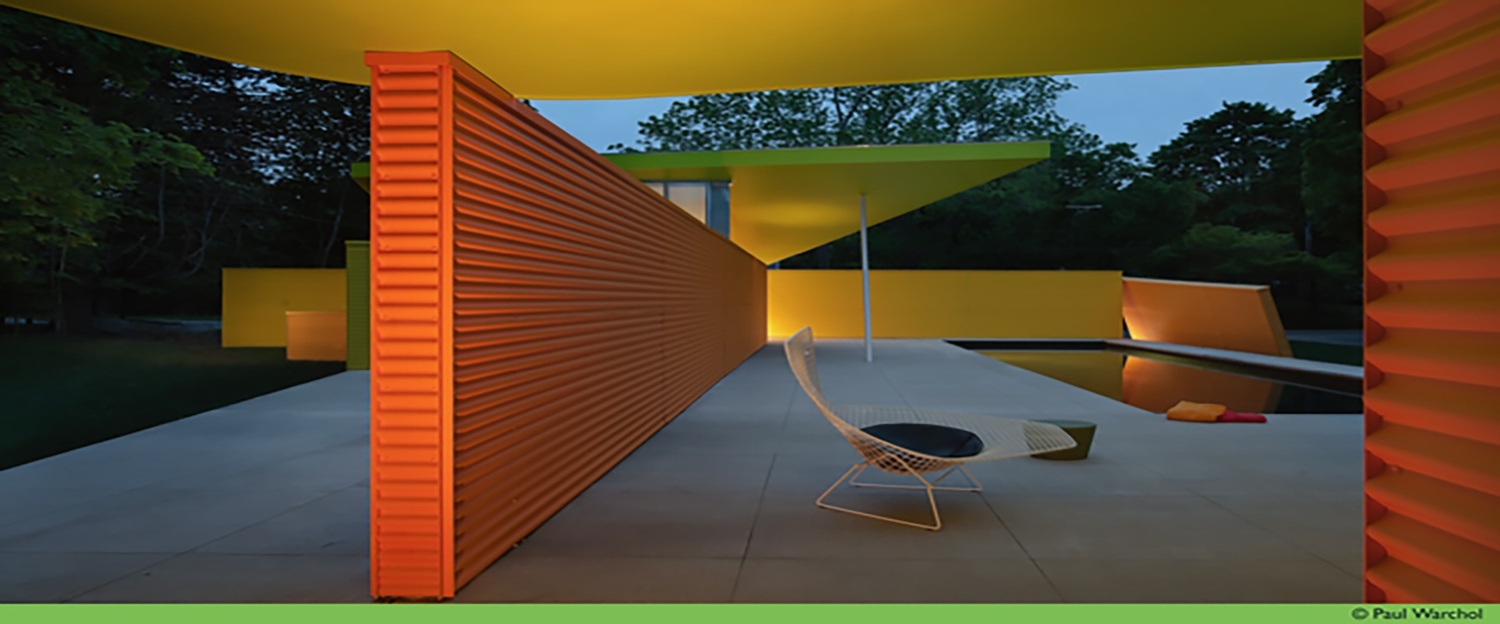
Stepping through the front door of the Nathaniel Rogers House in Bridgehampton, its beautifully restored moldings and fireplaces set an expectation for the visit. But upon entering its galleries, that expectation is subverted with jubilant colors: lime green, electric blue, carrot orange, brick red and canary yellow.
This is the world of Peter Stamberg and Paul Aferiat.
Closing on Saturday, “Stamberg Aferiat Architecture” celebrates the work of the two visionary architects, whose New York City-based firm Stamberg Aferiat + Associates is known for disproving the notion that modernism is, by its very nature, cold and aloof.
The exhibition — curated by Reed Kroloff, dean of the College of Architecture at the Illinois Institute of Technology — showcases photographs and architectural models of some of the firm’s most iconic projects across Long Island, including the architects’ own home on Shelter Island.
“They all strive for Le Corbusier’s description of architecture as the ‘masterly, correct and magnificent play of masses brought together in light,’” Kroloff said of the body of work in the exhibit’s introduction. “They strive, in short, to build an architecture of joy.”
The projects exhibited were all photographed by Paul Warchol, an artist who has been photographing architecture for about 40 years, including the Goldman Sachs Headquarters in New York City, Kiasma Museum in Helsinki and Princeton’s Lewis Center.
The work from the minds of Stamberg and Aferiat ranges in size, location and program. Some are geographically near, while others are more distant. Some are colorful, others more reserved. Most are built, some are speculations.
“But they all strive to create environments that support people and the things those people value,” Kroloff said.
“There's always a pop of color in every project,” Timothy J. Malyk, the museum’s collections manager, explained during a recent tour of the galleries. “They're kind of showing that modernism tends to be very cold, and they take that and they'll incorporate color. For every project they have, every house that they do is a different color.”
Here, the colors and sharp angles pop off the prints, which are simply hung with clips and not framed. According to Malyk, it allows the viewer to immediately take in the work.
“[A frame] has another kind of structural element to it that takes away from the photo,” he said. “This pulls you in. You're able to engage with the photograph itself.”
Sitting in the middle of the showcase, a bright orange chair with wooden shelving and bright green legs — called the “Salsa” armchair, designed for Knoll — makes the modern architecture seen in the photos tangible. Set within the context of a 19th-century home, it pops.
Over the last three decades, Stamberg Aferiat + Associates has gained acclaim for bringing light, color and form in new ways to commercial and cultural landmarks. The firm has designed a swanky pied-à-terre adjacent to The Frick Collection in New York, the Saguaro Hotels in Scottsdale, Arizona, and Palm Springs, California, and the Caan Barn, an expansion of Charles Gwathmey’s personal homestead in Connecticut, among many other projects.
Malyk said the exhibit came about after the duo showed him a few video renderings of their work. “I thought, ‘This stuff's incredible,’ so let's talk about how we can do a show,” he recalled. “I knew what was coming in, but I left it to them about what the exhibit was going to have specifically.”
All of these works and more can be taken home in the form of a coffee table book — or monograph — “Stamberg Aferiat Architecture: Form + Color / Form + Light,” featuring Warchol’s photos and forewords by Kroloff and architecture critic Paul Goldberger.
But nothing is better than seeing it in person.
“Stamberg Aferiat Architecture” will remain on view through Saturday, November 29, at The Bridgehampton Museum. Admission is free. On the final day of the exhibition, the architects behind the work, Peter Stamberg and Paul Aferiat, will lead a tour at 2 p.m. Suggested donation is $20. For more information, visit bridgehamptonmuseum.org.